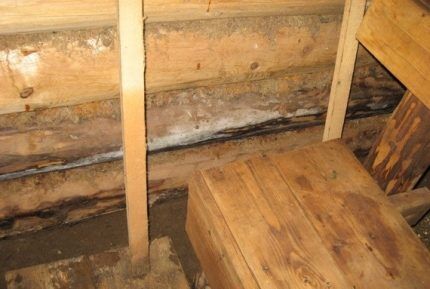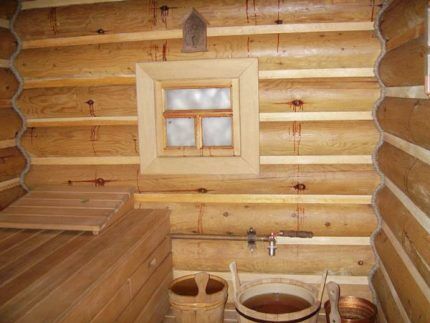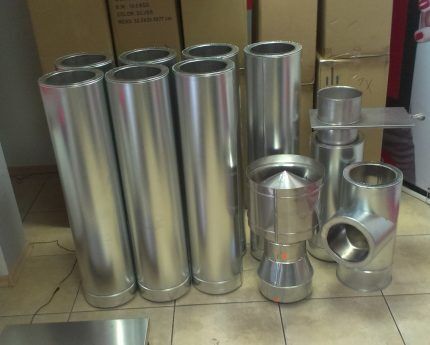Bastu ventilation in the bathhouse: advantages and disadvantages + installation instructions
Perhaps you consider yourself a bathing connoisseur or simply love it.There are many such people, and some have their own baths, but even they make mistakes. You've probably heard about the importance of ventilation - mistakes are made very often when arranging it, especially with regard to the bastu system, which provides many options for air removal. Proper bastu ventilation in a Russian-type bathhouse with its high humidity provides many advantages.
After studying our article, you will be able to choose the parts yourself and assemble the ventilation duct without outside help. The work will take a lot of time, but it won’t be difficult if you know everything. We will also talk about the advantages and disadvantages of bastu ventilation.
Bastu works with a certain air circulation. Much depends on the layout of the bathhouse - you will need to combine your own comfort and the ideal layout for ventilation. Find out more about the operating principle of this ventilation system and its components from our article.
The content of the article:
Features of ventilation in the bathhouse
Baths and saunas have steam rooms, and at different conditions they all need ventilation. In the steam room, the air is renewed up to several times an hour. The ventilation drawing is drawn in advance, sometimes selected from standard solutions for each size.
The word "bastu" is translated from Swedish as sauna. This is where the name of the type of ventilation comes from. At the top this system is closed, and at the bottom it works as a supply and exhaust system.Ventilation includes any heaters if they can heat the air flow.

A detailed ventilation diagram looks like this:
- Air enters the steam room through the supply channel from the street. In the classic and most common version, this is exactly what happens.
- The influent enters the room at the place under the stove (in the floor or at the bottom of the wall) and is heated by it.
- Warm air rises and mixes with steam. The ceiling gradually cools down and begins to fall down. Steam, saturated with microscopic drops of water, also moves.
- To prevent the air from swirling around the steam room and causing excess carbon dioxide to harm visitors, it should be removed outside.
- The natural exhaust method works: the air, after falling to the floor, will begin to flow into the lower hole of the vertical pipe. The pressure difference leads to its suction and movement up the channel and further to the street. The pipe also heats up and increases the temperature of the air, which helps it rise.
- Before getting out, the air passes from the vertical pipe to the horizontally located tee, which is higher. One end of this part goes outside, and the other goes inside the room. The second one should be closed by a plug. It is removed for normal ventilation and to reduce the heat.
- Another and more effective option is when there is no horizontal movement in the exhaust system, and its vertical pipe exits through the roof. This type of bastu also has a tee - shorter and with a vertical rather than horizontal placement.
Bastu works without fans/superchargers and only due to natural air movement.

The outdoor opening of the exhaust duct should be the end of a pipe, and not a flat passage. Remember the power sauna stove. The higher it is, the more important is the rotation of air in the bastu pipes. The craving weakens due to the change in movement.
In the instructions for pressure stoves, due to their high power, they suggest making a strictly vertical exhaust duct with an outlet through the roof. Keep this in mind. Due to the design with a turn and a powerful stove, the wood will begin to rot, and it will become difficult to control the humidity.
The stove can be located in an open place or behind a partition, then the incoming air will exit above it. Sometimes in the steam room there is only a heater, from which the air is heated, and the stove remains isolated.
The exhaust air enters the exhaust pipe at a small height above the floor or falls under it and enters a channel, the opening of which is also below the floor. Sometimes the cooled air goes under the shelf seats, where it enters the pipe. In some baths, the channel is hidden in a box, in a wall or behind it.
The exhaust part of the bastu is placed closer to the corner, and if the stove also has a corner location, then the pipe is placed diagonally opposite.
You should not raise the inlet of the exhaust duct above your knees - it will be too cool below. Russian baths maintain high humidity, so sometimes it is necessary to install a control valve on the hole. They reduce the outflow of air if there is not enough moisture in the bathhouse.

Bastu ventilation is suitable for simple steam rooms and those combined with a sink. Pipes are suitable from stainless or galvanized steel.
Sometimes they take channels for the drainage system and insert them into each other, but they are more suitable air ducts.
Benefits of bastu ventilation
The main advantage of circulation with a closed upper part of the room is that the air is heated more evenly. Objects in such a steam room also heat up better.
Other advantages of air exchange based on the bastu principle:
- fresh air for heating comes from the street;
- pleasant smell in the steam room;
- no additional ventilation devices are needed;
- more health benefits;
- easier bath care;
- large comfort zone in the steam room.
The ventilation system based on the basta principle has three options for operating the exhaust duct. With the plug and bottom valve open, it will become much drier and the steam room will receive fresh air through the exhaust part.
With the lid closed and the valve open, the pressure in the steam room will decrease and excess moisture will leave - this is the operating mode. Without a plug and with a closed damper under the horizontal exhaust pipe, the steam room becomes cooler and fresher.
Disadvantages of the ventilation system
The disadvantages manifest themselves in different ways, depending on the situation. Wood-burning stoves emit carbon monoxide, so you can only enter the steam room after complete combustion. During this time, the supply part of the bastu system will noticeably cool the room and the stove. You will have to burn a lot of wood, which is even worse, more expensive and time-consuming.
The consumption of raw materials after kindling can be reduced with any ventilation, not necessarily of the bastu type. It's enough to seal it.

In Russian baths it is customary to add water to hot stones. More humid air burns more strongly, and with ventilation, it descends onto the bath attendants with almost no loss in temperature, especially if the air outlet is placed under the shelf. You'll have to open the window more often.
Weaknesses of such ventilation:
- Low power. The exhaust part copes worse with air removal compared to the top ventilation, furnace ash pan, and mechanical systems.
- You cannot place a filter under the stove; it will melt.
- On a windless day, the draft decreases.
- Strong gusts of wind lead to drafts and cold at floor level.
The main disadvantage of bastu is its relatively low power.
Ways to increase ventilation power
Power is increased in several ways. If the ash pit of the stove is located in a steam room, then it should be surrounded by an elevation. The air near the stove will heat up, then make a semicircle along the upper half of the steam room and the heavier and cooler air will descend first on the opposite side.Due to the difference in height and draft in the ash pan, cold air will enter the furnace (combustion chamber) of the stove, from where it will exit through the chimney.
Most often, the ash pan is located in the rest room, and the closed part of the stove is directed to the steam room. Then, under the floor of the steam room, you can place a pipe for extracting exhaust air, with a hole on the wall farthest from the rest room. Place the opposite end of this exhaust duct under the ash pan in the rest room. The draft of the furnace will remove air from the building much faster than the exhaust pipe in the steam room.

The exhaust duct should still be left in place for additional ventilation. Just below the junction of the vertical and horizontal pipes there should be gate to deactivate traction. Close it to vent air only through the stove ash pan.
In the case of an exhaust pipe with a horizontal outlet, the influence of external air becomes evident. Its flows go down the slopes of the roofs and weaken the draft. In winter, another problem arises. The cold street air begins to mix with the warm air from the outlet with a gust of wind. The two flows swirl and further weaken the operation of the exhaust duct.
Consider the size of the slopes. If possible, make a street conclusion from the side of the gable where there are no overhangs. It is worth protecting yourself from the cold wind in winter at the design stage of the bathhouse itself. Fence the side under the external outlet with a building or some kind of heap.
Do not forget about the straight-line version with output through the ceiling and roof.
Installation of ventilation system bastu
We will do everything with our own hands, and before assembling the ventilation in the bathhouse, we proceed step by step: we select the material, bastu elements, and assemble them to the ceiling level.
Taking into account all the nuances, it makes sense to try a system with a discharge into a pipe going through the roof. First we select the material. Stainless steel parts will last twice as long - up to 50 years, but galvanization better withstands pressure, bending and many other types of loads.
Preparation of tools and materials
We select the number of parts based on the height of the building. The pipe should be raised above the roof by more than a meter, and the bottom should be placed just above the floor or under the shelf seats.

Let's look at the following kit for the exhaust ventilation part:
- 3 or 4 pipes, 1.25 m long, 110 mm cross-section;
- 2 channels of the same length, cross-section 180 mm;
- tee with cover;
- globular turbo deflector;
- adapter from 110 mm to 180;
- gate
We will collect the elements one into the other. We will make sandwiches with insulation from pipes of different widths - at the level of the attic and roof. We will connect the adapter to the channel approximately at ceiling level. It is better to take a damper with a rotary damper rather than a retractable one. It will be more convenient this way.
When assembled strictly vertically, the tee will end up inside the building. The deflector will help to draw air more intensely, and it works from the wind. The turbo deflector spins and increases traction almost always, even in light winds.
Instructions on arranging ventilation
We begin to connect the parts of the exhaust part of the system. We take the gate and insert it into a pipe with a cross-section of 110 mm.We place the elements on a hard surface and fasten them with thirteen self-tapping screws on 3 or 4 sides - we use a screwdriver. The gate will be at a convenient height for control.
At an accessible distance from the floor, but at the top of the steam room, you need to place a tee with a lid. When the pipe is directed strictly straight, the part is fixed vertically.
We take a 110 mm pipe and cut off a fragment for insertion between the gate and the tee, less than half a meter is enough. The length of the intermediate segment depends on the height of the ceiling more than all other parameters. We measure the steam room vertically. Usually it is 2.1-2.4 meters. Then we insert the cut fragment into the gate and drill it. Then we attach a tee to the intermediate piece. We work with a screwdriver.

We insert each element into the previous one and carefully press it. Next we take a straight pipe, again 110 mm wide, but not the full length, but the remaining part after the previously cut fragment. We insert it into the tee through the hole in the ceiling and fasten it inside the steam room. We strengthen all connections starting from the bottom of the exhaust system with tape to achieve normal density. We do the same with the subsequent ones.
In the attic we will insert a sandwich of 110 and 180 mm pipes. If necessary, we trim these channels. We place the insulation with the sandwich, and not openly, to protect it from unfavorable factors. Among the insulation materials, we choose either mineral/glass wool or polymer-based foam.
We select the thickness of the thermal insulation, fix it with glue, secure it with tape or adhesive foil over as large an area as possible.We install a 180 mm pipe on the insulation, and the sandwich is ready.
Then we insert an adapter from 110 mm to 180 mm into the finished part of the exhaust structure and secure it. We insert the insulated part into the transition element, fasten it with self-tapping screws and seal it with tape. We are making another sandwich - part of the system that will be above the roof.
Cut a hole in the roof. If the roof is made of corrugated sheets, then we make the hole without outside help. We drill points along the circumference to suit the width of the pipe and squeeze out the unnecessary middle. We insert another identical one into the previously installed sandwich. We go to the attic and secure it there with hardware and tape.

We install master flush on the roof. We treat its edges with sealant and fasten it with large self-tapping screws. We place a turbo deflector at the top of the last pipe. We treat the joints with tape, including on the master flush and in front of the deflector. The main stage of work ends here.
We decorate the pipe inside the steam room. To hide the tape, small dents and irregularities, we put on it cladding with imitation wood or brickwork. We screw a wooden handle to the tee cover.

For better draft of incoming air in the supply part of the system, it should be done with a pipe, but the void between the brickwork alone will also cope with the task. The gap is left at least 5 cm.
Ideally, the air is supplied so that it comes out exactly under the stove and vertically.Then drafts in strong winds will be less noticeable. The air supply point is enclosed with a small podium approximately two bricks high. Often they lay one row edgewise. The air supply from the street will be regulated by a rectangular rotary damper.
We also recommend reading our other article, where we talked in detail about the best schemes for organizing ventilation in a bathhouse. More details - go to link.
Conclusions and useful video on the topic
Bastu ventilation drawing with a transition from a vertical exhaust duct to a horizontal one:
Three interesting nuances in installing a ventilation system:
How best to do ventilation, examples of mistakes, and what they lead to:
Now you know what basta ventilation is and how you can improve circulation in the bathhouse and make it more comfortable. We told you how the ventilation system works, how it works, and also went through the main options for its installation. Even if you didn’t understand the structure of a bathhouse before, you now know the main thing about its ventilation and will be able to assemble a new bastu system or improve an old one.
Write comments if you have assembled ventilation for a bathhouse or thought about doing it. Tell us about your steam room. Perhaps you are just planning to build a bathhouse and don’t know where to start arranging ventilation? Ask your questions in the form below the article.



